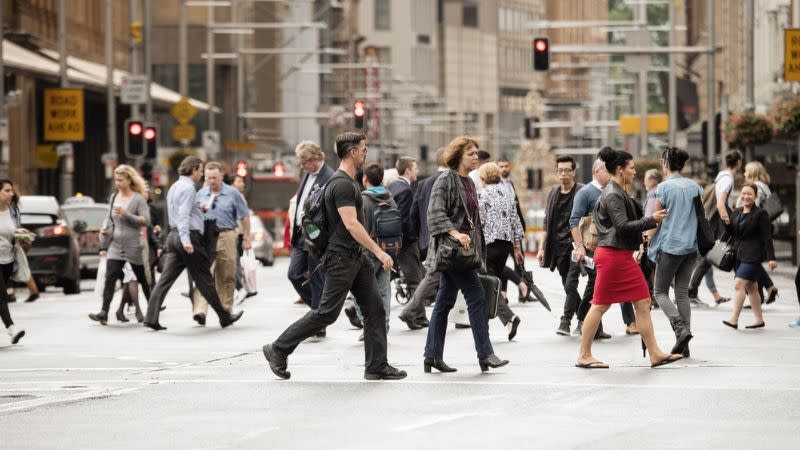Office Vacancy Up as Tenants Take Quality Over Quantity

The flight to quality is still on in earnest for Australia’s office sector—and we all know what that means.
Things are continuing to look a bit shaky as the post-pandemic push to get workers back to the office continues and economic headwinds loom on the horizon.
But according to the Property Council’s latest Office Market Report, the desire to be in CBD office space remains positive with demand edging up marginally by an average of 0.1 per cent across the country during the past six months.
“As was visible in 2022, office leasing activity across Australia in 2023 will be marked by transitions,” Cushman & Wakefield Australia head of office leasing Tim Molchanoff said.
“Shifts in ways of working, the economic cycle and financial markets will all play a role in shaping tenant demand.
“The big-ticket objectives last year of getting people back to the office and attracting talent in a tight labour market aren’t abating.
“This is now leading occupiers, particularly smaller organisations, to pursue quality space, albeit in some cases, smaller space, which will help rents stabilise or move higher in 2023. We anticipate national office vacancy will sit between 12-14 per cent this year.”
Colliers managing director of office leasing Simon Hunt said the flight to quality driven by occupier preferences for higher quality space would continue and was set to reduce national CBD prime office space vacancy over 2023.
“While several large occupiers have reduced the amount of office space they inhabit across CBD locations, many have moved to upgraded or newer buildings with higher lease values, indicating the relevance of office space,” he said.
CBRE Pacific head of office leasing Mark Curtain added: “While there is little doubt flexible working will remain a key long-term trend across the globe, corporate occupiers are acutely focused on securing best-in-class office solutions that will deliver a diverse offering of workplace settings and amenities to encourage their employees to return to the office.”
The Property Council’s latest report, which is released twice a year, showed overall CBD vacancy had increased from 12 to 12.5 per cent nationally.
But it said the increase had come on the back of solid office construction activity, with the supply of office space exceeding the historical average in five of the last six half-yearly reports.

Vacancy rates rose from 8.6 to 8.9 per cent in Canberra, 10.1 to 11.3 per cent in Sydney and 12.9 to 13.8 per cent in Melbourne. Adelaide’s vacancy lifted from 14.2 to 16.1 per cent driven by above average supply additions. In those markets where vacancy increased, there were moves toward prime stock over secondary stock.
In the nation’s other major CBDs, vacancy rates declined—Brisbane from 13.9 to 12.9 per cent, Perth from 15.8 to 15.6 per cent and Hobart from 2.7 to 2.5 per cent.
Colliers’ Queensland-based national director of office leasing Adam Barrett said the positive figures for the Brisbane CBD reinforce the tenant demand that was now outstripping supply, pushing down the vacancy rate.
There is less than 100,000sq m of office space—of which 72 per cent is already pre-committed—coming online in Brisbane over the next three years.
“We anticipate this demand to strengthen even further in 2023,” Barrett said. “With the limited supply over the few years, it’s likely we will see the vacancy rate going back into single digits. Personally, I believe the CBD market is turning back in favour of the landlords.”
Non-CBD markets recorded a slight decline in vacancy rates from 15.2 to 15.1 per cent, with tenant demand lifting 0.3 per cent.
Meanwhile, sublease vacancy declined in both the CBD and non-CBD market, a healthy sign that more companies were fully utilising their existing space. All CBD markets were below the historical average, except Sydney and Melbourne.
Property Council of Australia chief executive Mike Zorbas said the latest figures were encouraging, and demonstrate that large levels of supply, rather than demand, were influencing vacancy results.
“This is the third six-month period of positive demand nationally for office space in our CBDs,” Zorbas said.
“Organisations see that an office presence in our cities is an essential part of doing business.
“While new supply has increased total vacant space in some areas, these latest numbers are a vote of confidence in our CBDs.”
But Zorbas said that while the office market had recorded a modest increase in the level of demand, more attention was needed on the nation’s major CBDs.
"Growing skilled migration and the return of overseas students is most welcome,” he said. “The leadership role of governments and the active engagement of their teams in CBD life should remain front of mind for decision-makers in 2023.”
An office occupancy survey in November last year showed Perth offices at 80 per cent occupancy compared to pre-pandemic levels, Adelaide at 74 per cent, Brisbane at 67 per cent, Sydney at 59 per cent, Melbourne at 57 per cent and Canberra at 52 per cent.















